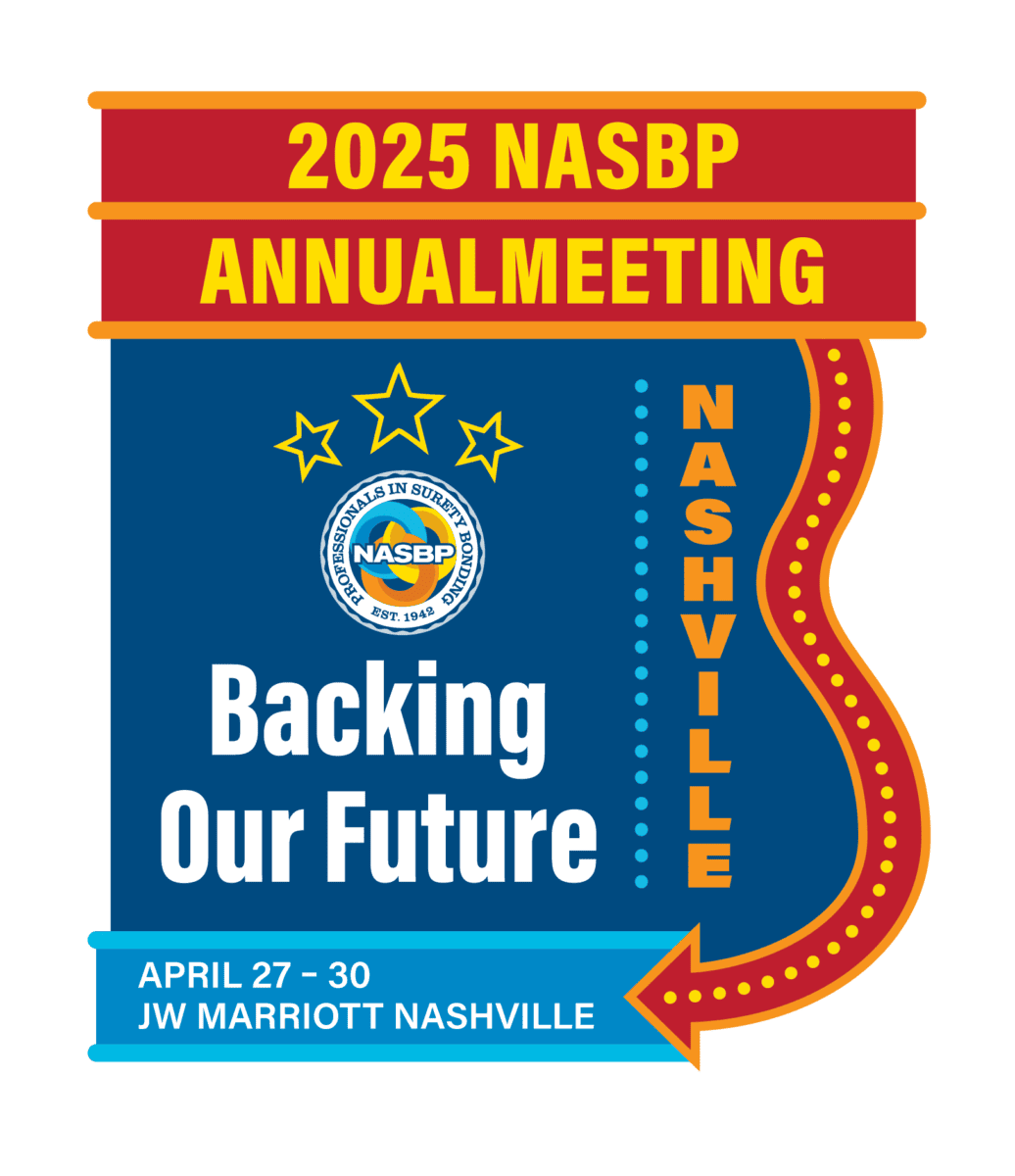
Here We Go Again: Individual Surety is in the News and Before Our Legislators
You already may have read the article, entitled “Hidden Value,” that appears in February 25th issue of the Engineering News-Record (ENR) and is written by Richard Korman, an editor at ENR. The ENR article is a special report on individual surety and starts with the sentence: “Individual surety has had plenty of shady dealings.” The article focuses on the backgrounds and actions of several prominent individual sureties, that I am sure many readers will find enlightening.
The subject of individual surety is not new to NASBP. NASBP steadfastly has held to its position that all sureties, whether natural persons or companies, must be subject to the regulatory control and oversight of the insurance commissioner in the jurisdiction in which they conduct surety business. The reason for that position is simple: a regulated market, we believe, is a safer market for all involved. As you know, corporate sureties are highly regulated; they, in fact, must obtain certificates of authority before conducting business in a particular jurisdiction. State insurance departments regularly review corporate sureties to assess their financial solvency, the quality and liquidity of their assets, their claims-paying abilities, the rates that they charge, the bond forms that they use, and how they perform in the marketplace with regard to policyholders and claimants.
What do we know of a specific individual surety? Well, if they are not regulated, we are not going to learn much, other than the unverified information meted out by the individual surety him or herself. How can we adequately gauge the individual surety’s capabilities for assuming the responsibilities entailed in suretyship; what can we learn of the 3Cs of the individual surety? At the federal level, individual sureties are not subject to vetting or oversight by the US Department of the Treasury, as are corporate sureties wishing to write bonds on federal contracts. The individual surety need not possess a certificate of authority to act as an insurer in any jurisdiction in order to write bonds on federal construction contracts. Disclosure of criminal record, personal insolvency or outstanding tax liens is not required of individual sureties. The sole responsibility for vetting an individual surety rests on the shoulders of federal contracting officers, and they are not formally trained to evaluate individual sureties or the assets pledged by such sureties. Can this truly be a satisfactory way to safeguard federal contracting agencies and subcontractors and suppliers reliant on the efficacy of surety bond protections?
The answer is obvious; it is not. That is why NASBP worked with Representative Richard Hanna to introduce H.R. 3534, the Security in Bonding Act, last Congress, which passed the U.S. House of Representatives. We have again worked with Congressman Hanna to reintroduce the bill, H.R. 776, this Congress, and we will devote our energies to making sure this bill becomes law. The approach of H.R. 776 is straightforward; it requires individual sureties to pledge only assets unconditionally guaranteed by the federal government, such as U.S. Treasury notes and bills, and mandates that such assets be placed in the direct care and custody of the federal government.
Now, ENR has issued an editorial stating that clarifying individual surety assets is needed, recognizing the merits of H.R. 776. The siren call to action may never be clearer, so we will need you to engage your colleagues and your clients to make sure that members of Congress in both parties understand that this is a bipartisan, common-sense, good government, protect-the-taxpayer measure that deserves their support and energies. Please cast off any political cynicism and know that you truly can make a difference for your industry if only you will engage your representatives. It matters!
But the battle on unregulated individual surety is not just at the federal level in 2013. Bills to expand the reach of unregulated individual surety have been introduced by individual surety proponents in the Maryland legislature. Maryland, you may recall, is the notable state exception to the rule that any surety, whether a natural person or a company, must obtain a certificate of authority from the insurance commissioner in the state in which they conduct business. Maryland, it seems, will continue as the unfortunate state bellwether on the issue.
Under a 2006 law, Maryland permits an individual surety to write performance and payment bonds at the prime level on state public works contracts without having to obtain a certificate of authority from the Maryland Insurance Administration. This law is due to sunset in 2014, and individual surety proponents are well aware of that fact and are doing everything they can to ensure that it will not sunset. The bills introduced this year, H.B. 585 and S.B. 599, if passed into law, will make the sunset unlikely. These companion bills would allow individual sureties to write subcontract bonds on public works projects. Also under the bill provisions, prime contractors performing public works contracts would be precluded from specifying the quality of the surety bonds from subcontractors—that is, they could not require that only bonds from regulated corporate sureties would be acceptable. Individual surety proponents have argued that a prime contractor’s ability to manage its subcontract risks by requiring, for example, only subcontract bonds from certain sureties, such as those listed on the US Department of Treasury Circular 570, as actions that are tantamount to discrimination.
A laughable position, right? Not so, these measures are getting positive attention from Maryland legislators, because they are couched in terms of subcontracting equity and fairness, and many Maryland legislators are not recognizing these bills for what they are, which are backdoor ways to preserve and to expand an unregulated individual surety market in Maryland. Despite NASBP contacting and educating Maryland contractor and subcontractor associations about the implications of the bills, such associations have not as of yet fully engaged on the measures. I along with NASBP Small and Emerging Business Committee Chair, Josh Etemadi, of Construction Bonds Inc., a division of Murray Securus, testified in Annapolis in opposition to these bills. We were joined by Joanne Brooks of The Surety & Fidelity Association of America. The General Assembly committees considering these bills heard our concerns, but we all left Annapolis with the feeling that we may be facing one of our toughest contests on the issue.
The stakes on individual surety legislation this year are high; and the opportunities for positive legislative change at the federal level are even higher. We’re in a fight, it’s a good fight, and we need you!
Get Important Surety Industry News & Info
Keep up with the latest industry news and NASBP programs, events, and activities by subscribing to NASBP Smartbrief.




